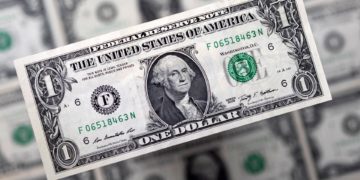The anti-risk US Dollar resumed its broader downward trajectory this past week, and remains at risk to continue doing so. This has left the Greenback near lows set at the start of this year against its major counterparts. Demand for the world’s most liquid currency faltered as sentiment recovered in global financial markets. The S&P 500, FTSE 100 and Nikkei 225 charged higher alongside shares in Emerging Markets.
There was also the continuation of steady gains in longer-dated Treasury yields, with 30-year rates at highs from February 2020. Economic recovery bets and rising inflation expectations have also been pushing breakeven Treasury yields upward. The 10-year one is hovering around 2018 peaks, having briefly touched the highest since 2014. Disappointing core US CPI data was brushed aside as markets traded into the weekend.
The week ahead is cut slightly short on Wall Street due to the Presidents’ Day holiday on Monday. This is as stock exchanges in China and Hong Kong are offline for the Lunar New Year. As such, reduced liquidity conditions could open the door to higher-than-normal volatility in financial markets given breaking developments. That could leave the Greenback in a position to capitalize on should volatility strike.
Focusing on the economic calendar, the US will release January’s retail sales print. Following a 0.7% m/m contraction in December, purchases are expected to increase 0.8%. Industrial production for the same period will also cross the wires on the same day. Then, FOMC minutes may reiterate the central bank’s accommodative setting, without an urgency to do more beyond current paces in quantitative easing.
The latter may be something that could continue disappointing investors, but the focus lately has and will likely be on fiscal stimulus. US President Joe Biden seems to be aiming to deliver around US$1.9 trillion in relief through budget reconciliation given a lack of Republican support in the Senate. This may continue boosting longer-dated government bond yields, potentially bullish for USD. But, the Fed’s dovish stance remains supportive to a ‘risk-on’ environment, leaving the Greenback vulnerable as well.










































